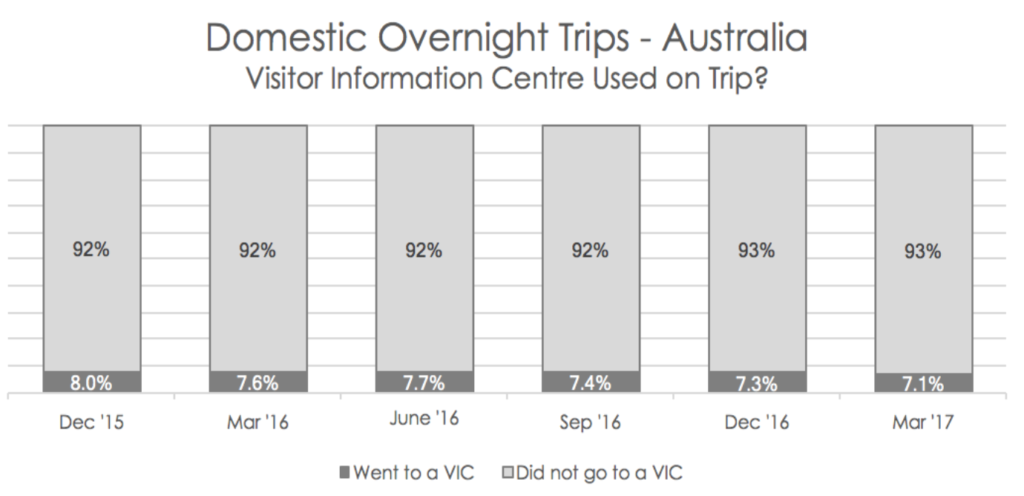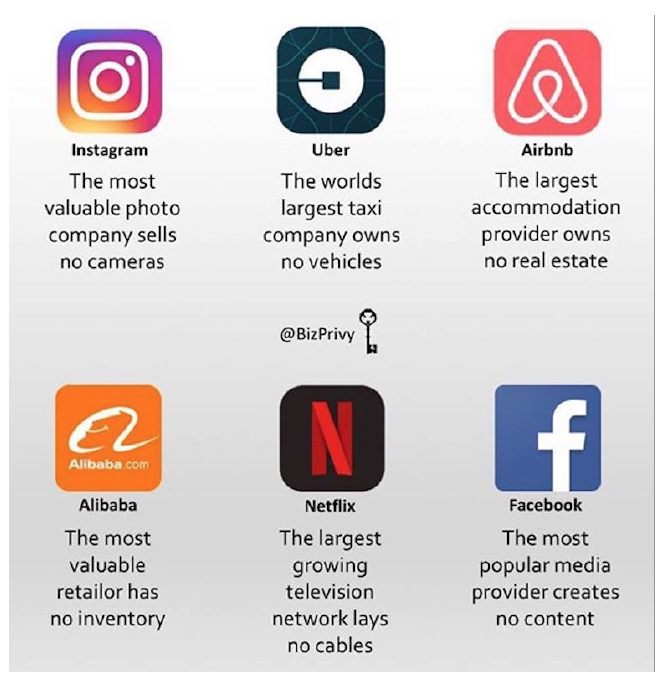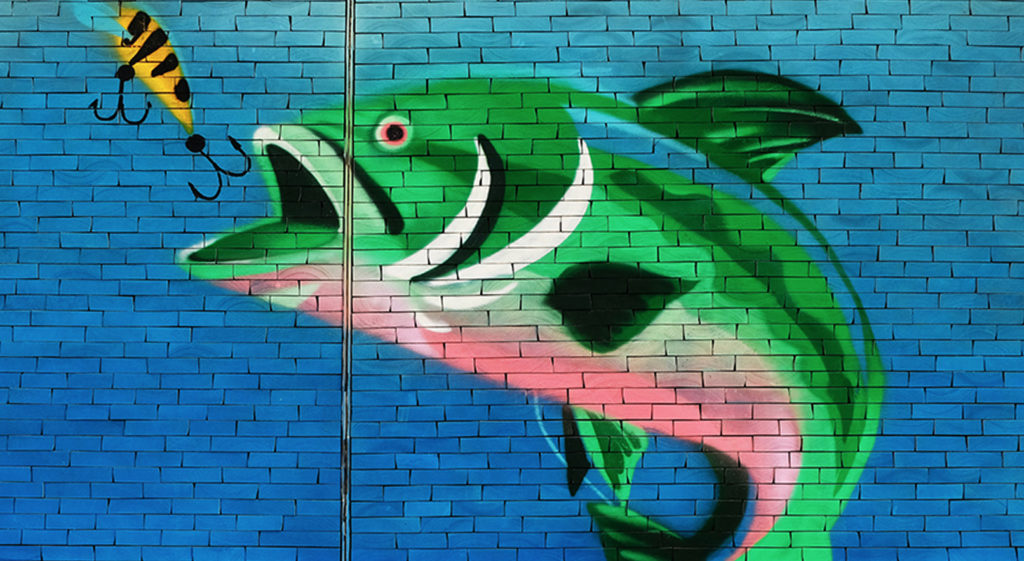By DMS
Fish where the fish are : Makes sense if you want to catch fish. It also makes sense if you want to catch visitors.
Visitor Servicing is about connecting with as many visitors, or potential visitors, as possible. Both inside and outside the destination. Then providing them with information that will influence where they go and what they do.
So, back to our fishing analogy. If your Visitor Servicing objective is to reach as many people as possible it makes absolutely no sense to fish where the fish aren’t? Yet this is precisely what many destinations do.
In its most simplistic sense, Visitor Servicing can be separated it into two broad areas.
- Visitor Servicing that targets potential visitors outside a region.
- Visitor Servicing that targets visitors while inside a region (in-destination).
The two most common and consistent channels used to distribute visitor information are digital (websites and social) and Visitor Information Centres (VICs).
The problem
Unfortunately, neither tool really reflects the principle of fishing where the fish are.
Take visitor websites. Attracting 60,000 unique visitors every year to a regional tourism destination website is considered a good result. And indeed, it is. But if that destination, wanted, by way of example, to reach say an audience of families with kids; of which there are over a million living in NSW, then the gap between the number of people the destination is connecting with and the potential number of people who might be worth connecting with is significant. Essentially, they haven’t connected with 94% of their desired audience.
The example is a particularly ‘blunt’ one. However, the comparison is only designed to indicate how many fish are not being caught when you just rely on traditional visitor servicing solutions to reach potential visitors.
Likewise, with in-destination visitor servicing although the example is a little more precise. Tourism Research Australia data indicates that over 92% of visitors to a region do not visit the VIC. Even allowing for the inevitable exceptions, that is a staggering figure given the dollars invested by most regions into VICs and visitor information collateral material housed inside.

So, what's the alternative?
- The first is to stop thinking of being the provider of a VIC and start thinking of being the provider of visitor services.
- The second is to broaden the focus from visitors to also include residents.
Integrating the above two insights into our own extensive visitor servicing research, has persuaded us to develop a new approach to visitor servicing. One that ‘flips’ the current model on its head.
Instead of a model that makes people go to where the visitor information is located, we have developed a model that is designed to bring the visitor information to where the people are located.
It’s a bottom-up approach rather than top-down. It’s built around the visitor information journey rather than a one size fits all style solution. Instead of a ‘hook’ to connect visitors to visitor information we use Velcro to connect visitors to visitor information through as many different customer touchpoints as possible.
Visitor websites will of course still play an important role in visitor servicing. Likewise, Visitor Information Centres, budgets permitting. But our new approach also incorporates residents of a local community into the equation and looks at business partnership opportunities.
- It considers Pop up VICs for important source markets and mobile solutions to leverage key events.
- It recognises that redesigning the Visitor Information Centre (or its retail strategy), to better reinforce the destination’s brand and provide visitors with more inspiration to visit will significantly lift visits as well as income.
We’ve created an Ultimate Concierge service to improve the visitor experience. An e-commerce solution that connects visitors to local artists and artisans as well as providing visitors with a connection to the destination or region long after they have returned home.
In a nutshell, the new model means getting the right information, to the right people, at the right time, in the right way.
An immediate opportunity
In-destination visitor servicing. Visitors to a destination are a captive audience who are actively looking for information on what to see and do in the destination and region.
“85% of leisure travellers decide on activities only after having arrived at the destination” (Source: Google)
Visitors to Eurobodalla, on the NSW South Coast, indicated when surveyed, that providing more visitor information would also be the best way to improve their visitor experience. The more positive the visitor experience, the more likely people were to spend more in the region, to visit again and to recommend the region to their friends and family.
Yet despite this, the focus of many regions in-destination visitor servicing is limited, almost exclusively, to the Visitor Information Centre (VIC). That is not a criticism of the VIC. They can make an important contribution to in-destination visitor servicing (providing enough people visit them) but there are also many cost-efficient and visitor-effective in-destination solutions that can be implemented outside of the VIC.
In essence, it’s thinking laterally about also connecting with the 92% (or so) of visitors who never go to the VIC.
Four important benefits
In-destination visitor servicing has the potential to deliver four important benefits:
- It can generate wider visitor dispersal throughout the region.
- It encourages visitors to spend more and if they have a flexible travel itinerary, stay longer. Both of which contribute to higher visitor yield.
- It contributes to a better visitor experience (see above).
- It provides an opportunity to share visitor servicing responsibilities with residents and operators. And in doing so, help local communities to recognise that everyone has an important role to play when it comes to engaging with visitors and sharing visitor information. It also provides an opportunity for Council to more closely and consistently engage with industry.
The risk of maintaining status quo
In the last twenty years or so, technology has changed the world. Dramatically.
- Facebook (launched 2004) the world’s most popular media provider produces no content
- Instagram (launched 2010) the world’s most valuable photo company sells no cameras
- Airbnb (launched 2008) the world’s largest accommodation provider owns no real estate
- Uber (launched 2009) the world’s largest taxi company owns no vehicles

There is little doubt that digital technology has changed tourism, including the way visitors consume information. It has created a challenge for Visitor Servicing in general and VICs in particular.
As the October 2019 Deloitte Access Economics report – Technology Disruptors in Tourism – observed:
“The introduction of new technologies has disrupted and continues to disrupt the tourism industry in many ways. It has changed the way operators target travellers, it has challenged existing service offerings and is forcing a re-imagining of the visitor experience and the end-to-end visitor journey”
Sometimes we need to remind ourselves just how much the world of tourism has changed in the last 20 years while the world of visitor servicing has stood still. And if we don’t, we run the risk of becoming too complacent and making a ‘Blockbuster’ like mistake.
The Blockbuster lesson
“I’ve been frankly confused by this fascination that everybody has with Netflix. Netflix doesn’t really have or do anything that we can’t or don’t already do ourselves.” Blockbuster CEO Jim Keyes, in a 2008 interview with CBS News
In the mid-2000s, Blockbuster Video was the world leader in movie rentals. The famous blue and yellow stores had spread across the globe, operating in over 9,000 locations and generating an annual revenue of $5.9 billion USD. They were stocked with thousands of DVDs and knowledgeable employees who often provided their own film recommendations.
By 2010, Blockbuster was bankrupt and all its brick-and-mortar stores empty, essentially gutted by the Netflix-led tsunami of online movie rental and digital streaming.
While destinations won’t go broke like Blockbuster if they don’t evolve their visitor servicing model; they certainly won’t prosper like Netflix either.
Evolution in Scotland
In 2017, VisitScotland announced the closure of 39 of its 65 visitor centres after measuring a ten-year “decline in the number of tourists visiting their VIC, amounting to a 58% drop in footfall.” What is more interesting is that after a 60% reduction in the number of visitor centres, Scotland’s attractions have seen a bigger increase in visitors than any other area in the UK outside of London.
Most relevant, is that the VICs that were closed were replaced with around 1,500 “information partners”, made up of local businesses, such as bed and breakfasts, distilleries or local retailers.
It's not all about digital
People still play a very important role in visitor servicing. Personal recommendations from friends, family and locals were unrivalled in their capacity to influence decisions. Whilst official online sources are more often utilised, they rate considerably lower on both satisfaction and influence metrics (Source: Visit Victoria – Visitor Servicing Research – February 2019).
It’s not just the ability to influence decisions that makes the people side of visitor servicing so important. It’s the potential to deliver a positive visitor experience – the emotional added-value rather than just the functional distribution of information. Positive ‘human’ interactions can be some of the most memorable parts of a trip and a positive encounter with a friendly local can provide the kind of ‘deeper’ experience visitors are increasingly looking for.
As the SKIFT ‘experiential traveller’ survey highlights, 65% of respondents, when asked to prioritise their travel arrangements, would “rather come back from a trip having experienced something new over feeling rested and recharged”. Locals are a key source to help them experience something new.
Integrate technology with face-to-face service:
- Ensure the offline services remain robust with staff and volunteers on hand to answer questions
- Maintain staff and volunteer knowledge with digital technology
- Determine the best vehicles to provide inspiration and added value – bricks and mortar VICs are not the only solution.
Some closing thoughts
Visitor Information is critical to the ‘health’ of a destination’s visitor economy in general and the ‘wealth’ of its operators in particular.
Too often Visitor Servicing solutions are still often viewed through a fairly traditional lens – VICs, Visitor Guides, visitor websites and most recently social media channels.
The responsibility for delivering visitor servicing solutions is, in the main, still seen to be the responsibility of Council.
We need to remind ourselves how much the world of tourism has changed in the last 20 years while the world of visitor servicing has stood still. It’s now time to catch up. That means, as Visit Scotland did, not only embracing the new, but when needed, letting go of the old.
A good start would be to:
- Apply a more visitor-centric lens to visitor servicing. This means getting the right information, to the right people, at the right time, in the right way.
- Share the visitor servicing workload throughout the community. As the saying goes: tourism is everyone’s business.
- And, if we want to get the most bang from our buck, we need to of course, fish where the fish are!
Are you interested in creating the right visitor services strategy for your region or destination? Visit our Destination Solutions page or please ‘drop us a line’ at sayhello@destinationmarketingstore.com.au


